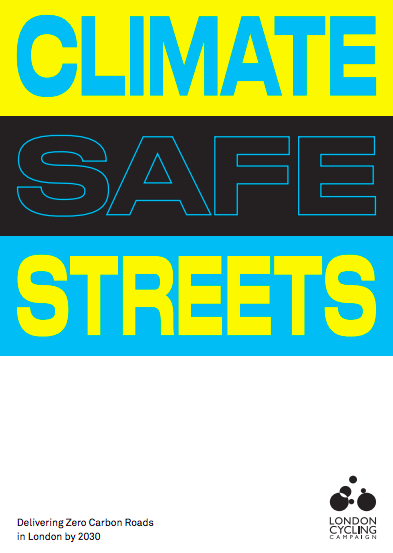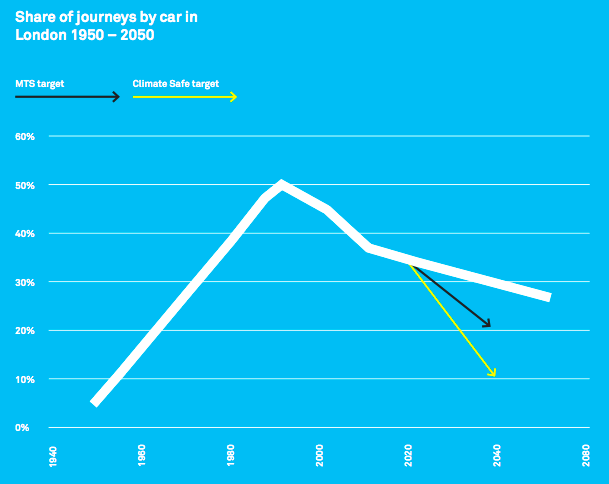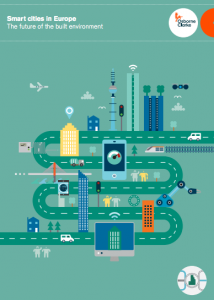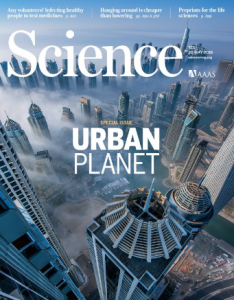Site search:
-
What’s new?
Energy for London Tags
Brent Buildings Camden Carbon Emissions CHP Cities Climate Adaptation Community Heating Community Initiatives Croydon Data DECC Decentralised Energy Distribution ECO Energy Costs Energy Efficiency Enfield FIT Fuel Poverty Funding Green Deal Hackney Haringey Housing Islington Lambeth Library Local Authorities Mayor Newham Ofgem Olympics Photovoltaics Planning RE:FIT RE:NEW Renewable Energy Retrofit Southwark Tower Hamlets Transport Waltham Forest Waste WestminsterEnergy Archives:
- February 2021 (1)
- January 2021 (15)
- December 2020 (15)
- November 2020 (9)
- October 2020 (3)
- August 2020 (5)
- July 2020 (3)
- June 2020 (4)
- April 2020 (10)
- March 2020 (5)
- February 2020 (2)
- January 2020 (3)
- October 2019 (1)
- September 2019 (4)
- August 2019 (2)
- July 2019 (1)
- August 2018 (1)
- November 2016 (8)
- October 2016 (8)
- September 2016 (2)
- August 2016 (8)
- July 2016 (14)
- April 2016 (12)
- March 2016 (16)
- February 2016 (8)
- January 2016 (4)
- December 2015 (1)
- November 2015 (1)
- October 2015 (16)
- September 2015 (3)
- June 2015 (1)
- May 2015 (1)
- April 2015 (1)
- March 2015 (1)
- February 2015 (1)
- January 2015 (1)
- December 2014 (18)
- November 2014 (4)
- August 2014 (8)
- July 2014 (7)
- June 2014 (25)
- May 2014 (8)
- April 2014 (4)
- March 2014 (12)
- February 2014 (7)
- January 2014 (13)
- December 2013 (11)
- November 2013 (15)
- October 2013 (15)
- September 2013 (18)
- August 2013 (5)
- July 2013 (20)
- June 2013 (33)
- May 2013 (8)
- April 2013 (16)
- March 2013 (25)
- February 2013 (14)
- January 2013 (20)
- December 2012 (23)
- November 2012 (23)
- October 2012 (25)
- September 2012 (14)
- July 2012 (12)
- June 2012 (43)
- May 2012 (20)
- April 2012 (8)
- March 2012 (40)
- February 2012 (39)
- January 2012 (40)
- December 2011 (22)
- November 2011 (40)
- October 2011 (33)
- September 2011 (48)
- August 2011 (40)
- July 2011 (58)
- June 2011 (41)
- May 2011 (80)
- April 2011 (38)
- March 2011 (33)
- February 2011 (25)
- January 2011 (24)
- December 2010 (3)
- November 2010 (7)
- October 2010 (6)
- September 2010 (7)
- August 2010 (1)
- July 2010 (2)
- June 2010 (4)
- May 2010 (1)
- March 2010 (3)
- February 2010 (3)
- December 2009 (5)
- November 2009 (2)
- October 2009 (3)
- July 2009 (3)
- June 2009 (1)
- April 2009 (1)
- March 2009 (1)
- February 2009 (1)
- January 2009 (1)
- December 2008 (2)
- October 2008 (1)
- September 2008 (1)
- July 2008 (1)
- March 2008 (2)
- January 2008 (2)
- October 2007 (1)
- September 2007 (3)
- July 2007 (1)
- March 2007 (1)
- February 2007 (3)
- November 2006 (3)
- August 2006 (1)
- February 2006 (1)
- May 2005 (1)
- February 2004 (1)
Library
A framework for understanding local government sustainable energy capacity applied in England
April 2020: Academic research paper published in Energy Research & Social Science Volume 62, April 2020 looking at a critical issue of the lack of capacity within local authorities to engage on energy and climate issues.
“Analyses of local climate change governance and sustainable energy transitions have tended to focus on understanding broader governance networks, within which local governments are important actors. Such approaches often make appeals to (lack of) capacity when seeking to understand the many limits to local sustainability programmes, however local government capacity is rarely given a primary analytical focus. We offer a definition of local government sustainable energy capacity, organise it into six types, and explore it in relation to contextual factors across scales: political institutions; energy and climate change policies and material aspects of energy systems. This heuristic framework is applied to case studies of eight local and combined authorities in England, a country with particularly centralised political institutions and energy systems. We conclude that capacity is a useful lens through which to explore the extent to which, and importantly how, local governments can become active sustainability actors. We also find that the development of knowledge capacity is becoming increasingly important; that there is some evidence of political re-scaling in energy; and identify some ways in which material aspects of energy systems have significant implications for local government sustainable energy capacity.“ Open access article here.
Opportunities and threats for pollinator conservation in global towns and cities
April 2020: With increasing concerns over a decrease in the number of pollinating insects (see BBC article here), and at least one London local authority looking at developing a ‘pollinator action plan’ (Waltham Forest – see outline and recent consultation paper here), this academic research, published in Current Opinion in Insect Science Volume 38, April 2020,paper provides some useful findings. Open access paper here.
“Urban expansion is considered to be one of the main threats to global biodiversity yet some pollinator groups, particularly bees, can do well in urban areas. Recent studies indicate that both local and landscape-level drivers can influence urban pollinator communities, with local floral resources and the amount of impervious cover in the landscape affecting pollinator abundance, richness and community composition. Urban intensification, chemicals, climate change and increased honey bee colony densities all negatively affect urban pollinators. Maintaining good areas of habitat for pollinators, such as those found in allotments (community gardens) and domestic gardens, and improving management approaches in urban greenspace and highly urbanised areas (e.g. by increasing floral resources and nesting sites) will benefit pollinator conservation.”
London’s wider greenhouse gas impacts
March 2020: A new research paper published by the Greater London Authority (GLA) considering an issue often raised – which is what is the total impact of London’s greenhouse gas emissions, taking into account the goods and services that Londoners use.
The paper ‘Consumption based Greenhouse Gas Emissions for London
(2001 – 2016)‘ undertaken by the University of Leeds, sets out that it was commissioned to understand “the total greenhouse gas impact Londoners have, including those emissions that take place outside London’s physical boundaries, in order to tackle the climate emergency.” The methodology employed in the report allows for “emissions that occur due to the consumption activities of London residents, including all the emissions associated with the production of goods and services throughout their complete supply chain…” So what difference does it make to London’s GHG emissions when taking into account a combustion based route?
Posted in Library, News
Tagged Carbon Emissions
Comments Off on London’s wider greenhouse gas impacts
Climate Safe Streets Report Launch
19 March 2020: The London Cycle Campaign (LCC) launched today its ‘Climate Safe Streets’ report, “a roadmap to decarbonise the capital’s roads in the next 10 years.” The Climate Safe Streets report sets out clear priorities for change, including:

Rapidly delivering a high-quality cycling network: to enable people to choose to cycle their everyday journeys
Introducing Smart Road User Charging: to discourage the most damaging and polluting motor vehicle trips
Supporting the growth of zero-carbon shared mobility options: such as dockless e-scooters (if made legal), cycles, e-bikes and electric car clubs, so that all Londoners have suitable, sustainable transport choices on their doorstep.

The report presents some helpful statistics on the different modes of transport in the city – as well as providing international comparisons, as well and setting out targets for 2030.
Read the full report here.
How urban nature supports young people’s mental health and wellbeing in a diverse UK city
February 2020: Good to see this research being undertaken. Not in London but a ‘Northern UK city’ – but some useful insight here relevant to those working on similar issues in the capital.“Using interviews and creative arts workshops, we explored the value of urban nature for the mental health and wellbeing of 24 young people aged 17–27 years, 9 of whom had lived experience of mental health difficulties. Trees, water, open spaces and views were frequently experienced nature typologies offering benefits. Deteriorating landscapes, young people’s shifting identities and perceived time pressures disrupted support. Young people expressed how urban nature encounters were experienced as accepting and relational, offering a: stronger sense of self; feelings of escape; connection and care with the human and non-human world.” Open access paper here.
Posted in Library
Leave a comment
Changing the urban design of cities for health
February 2020: Research paper published in Environment International
Volume 134, January 2020. “Car-dependent city planning has resulted in high levels of environmental pollution, sedentary lifestyles and increased vulnerability to the effects of climate change. The Barcelona Superblock model is an innovative urban and transport planning strategy that aims to reclaim public space for people, reduce motorized transport, promote sustainable mobility and active lifestyles, provide urban greening and mitigate effects of climate change. We estimated the health impacts of implementing this urban model across Barcelona.” Open access article here.
Can a city reach energy self-sufficiency by means of rooftop photovoltaics?
February 2020: Research paper published by the Journal of Cleaner Production Volume 245, 1 February 2020′ (open access) which – whilst not on London (a case study from Poland) – sets out the route for assessing what the potential maximum contribution of rooftop solar could provide in meeting the energy demands of a city.
The city of Wroclaw has a high level of industrial energy consumption and the study concludes “[a]lthough energy storage, in the form of batteries, slightly improves both the autarky and environmental indices, the relation between potential PV generation and load makes them very infrequently useful (mostly in summer) and not economically justified.”
Understanding climate change from a global analysis of city analogues
July 2019: “Here, we test the extent to which the iconic cities around the world are likely to shift in response to climate change. By analyzing city pairs for 520 major cities of the world, we test if their climate in 2050 will resemble more closely to their own current climate conditions or to the current conditions of other cities in different bioclimatic regions”.
Read the full paper here.
How are cities planning to respond to climate change?
August 2018: Paper published in Journal of Cleaner Production
Volume 191, 1 August 2018. “This paper reports the state of local planning for climate change by collecting and analysing information about local climate mitigation and adaptation plans across 885 urban areas of the EU-28… Our analysis reveals that city size, national legislation, and international networks can influence the development of local climate plans. We found that size does matter as about 80% of the cities with above 500,000 inhabitants have a comprehensive and stand-alone mitigation and/or an adaptation plan (A1). Cities in four countries with national climate legislation (A2), i.e. Denmark, France, Slovakia and the United Kingdom, are nearly twice as likely to produce local mitigation plans, and five times more likely to produce local adaptation plans, compared to cities in countries without such legislation.” Open access article available here.
CITIES journal on energy and the environment
August 2016: Looking through the 2016 issues of academic journal CITIES, there are a number of interesting papers with an energy/environmental theme posted online which are also Open Access – and hence available to download free of charge. These include:
- City dweller aspirations for cities of the future: How do environmental and personal wellbeing feature?
- Quality of life in cities – Empirical evidence in comparative European perspective
- Streamlining urban housing development: Are there environmental sustainability impacts?
- Where are urban energy transitions governed? Conceptualizing the complex governance arrangements for low-carbon mobility in Europe
- Cities and climate change mitigation: Economic opportunities and governance challenges in Asia
- Governing cities for sustainable energy: The UK case
- Methodologies for city-scale assessment of renewable energy generation potential to inform strategic energy infrastructure investment
- How website users segment a city: The geography of housing search in London
Smart Cities and the Built Environment
 14 July 2016: Osborne Clark – the “smart cities law firm” – released a report last week examining how “how smart built environments leverage data, new technology and innovative and collaborative thinking to deliver services that benefit citizens”.
14 July 2016: Osborne Clark – the “smart cities law firm” – released a report last week examining how “how smart built environments leverage data, new technology and innovative and collaborative thinking to deliver services that benefit citizens”.
The report Smart cities in Europe: The future of the built environment includes a profile of the regeneration of Kings Cross: “Why is this redevelopment a good example of a smart built environment? For a start, the building utilises renewable energy. Solar
panels that generate around 10% of the
station’s energy requirements were installed
on the 2,500m² renovated train shed roof. A
combined heat and power (CHP) plant will
also provide locally generated power to new
businesses and homes on the site.”
Posted in Decentralised Energy, Library, News, Renewable Energy
Tagged Camden, CHP, community energy, Photovoltaics, smart cities
Leave a comment
City-integrated renewable energy for urban sustainability
 July 2016: A recent issue of the journal Science published a number of articles around the theme Urban Planet. One of the papers published was entitled: City-integrated renewable energy for urban sustainability (link to full text). The paper takes a high-level overview on a range of key carbon reduction opportunities at the city-level.
July 2016: A recent issue of the journal Science published a number of articles around the theme Urban Planet. One of the papers published was entitled: City-integrated renewable energy for urban sustainability (link to full text). The paper takes a high-level overview on a range of key carbon reduction opportunities at the city-level.
“To prepare for an urban influx of 2.5 billion people by 2050, it is critical to create cities that are low-carbon, resilient, and livable. Cities not only contribute to global climate change by emitting the majority of anthropogenic greenhouse gases but also are particularly vulnerable to the effects of climate change and extreme weather. We explore options for establishing sustainable energy systems by reducing energy consumption, particularly in the buildings and transportation sectors, and providing robust, decentralized, and renewable energy sources. Through technical advancements in power density, city-integrated renewable energy will be better suited to satisfy the high-energy demands of growing urban areas. Several economic, technical, behavioral, and political challenges need to be overcome for innovation to improve urban sustainability.”
Posted in Decentralised Energy, Energy Efficiency, Library, News, Renewable Energy, Uncategorized
Tagged Cities
Leave a comment

